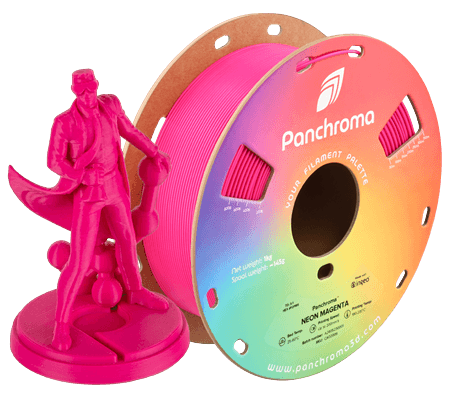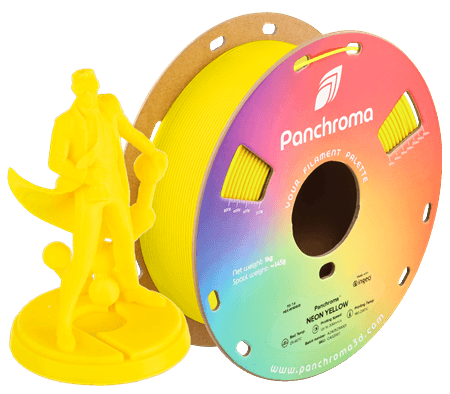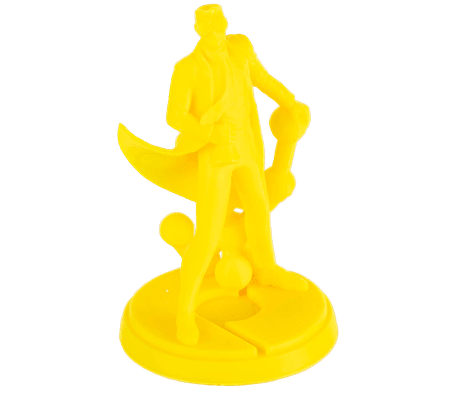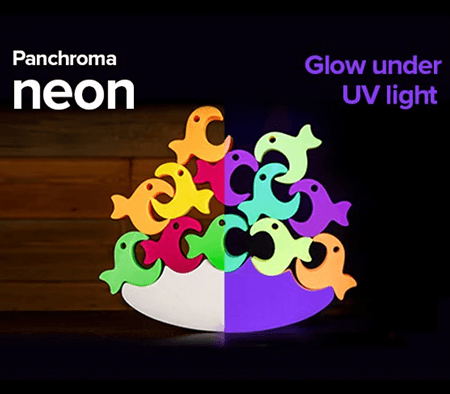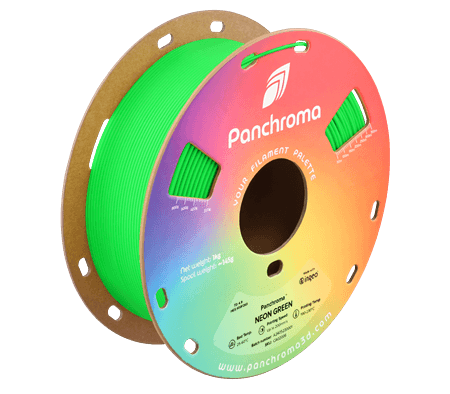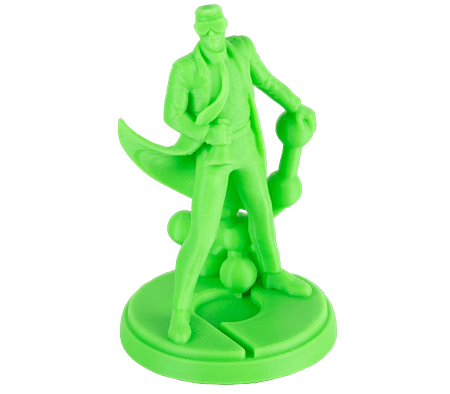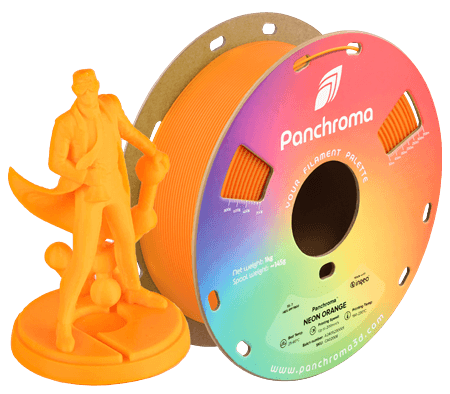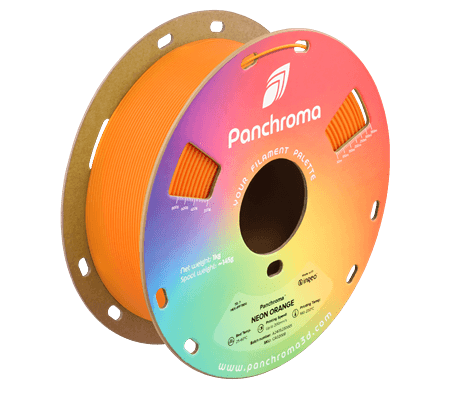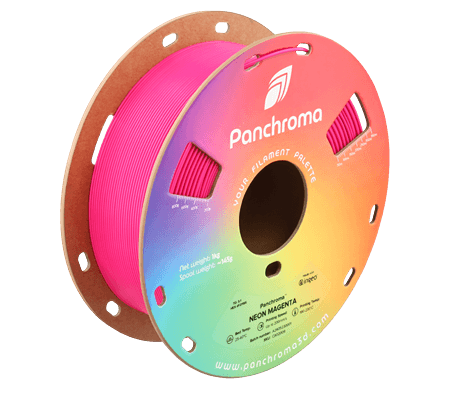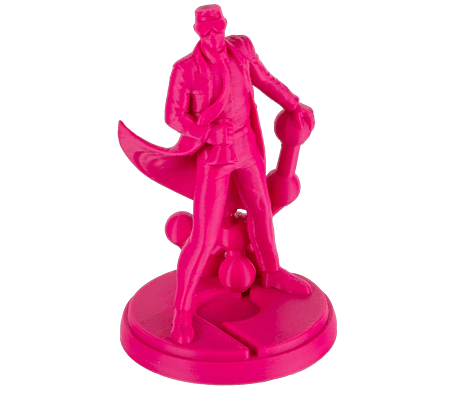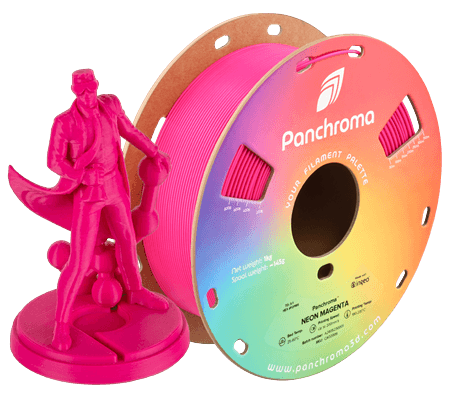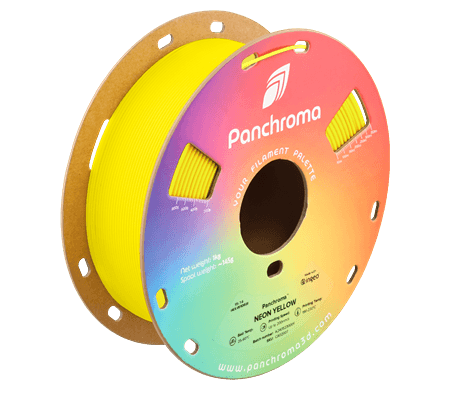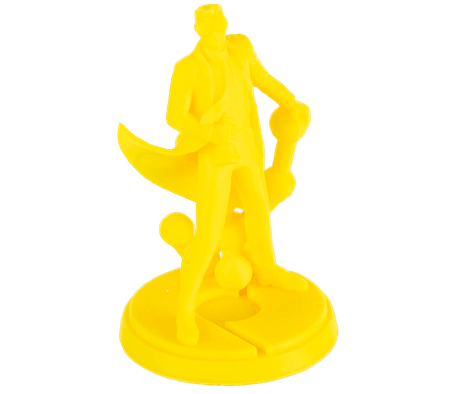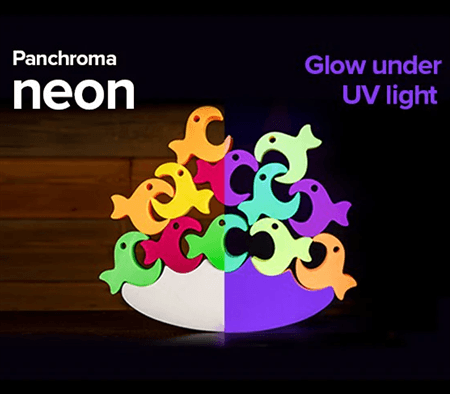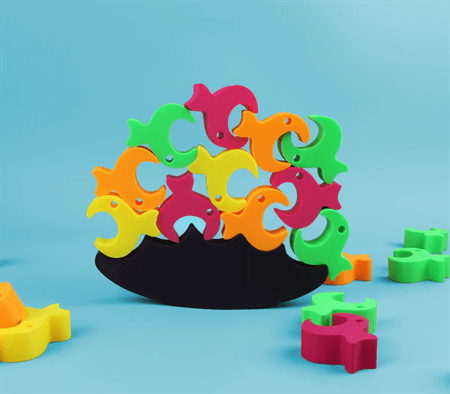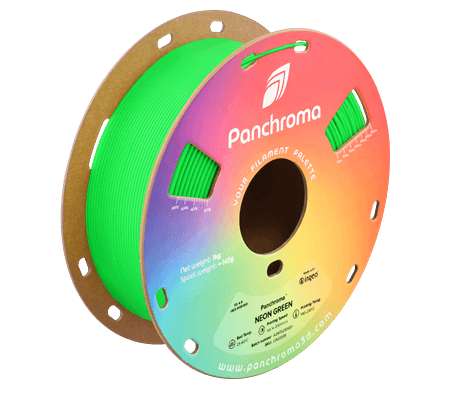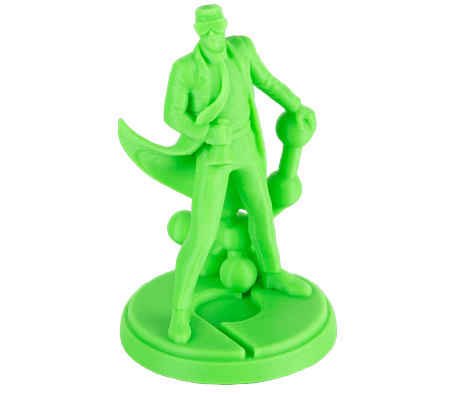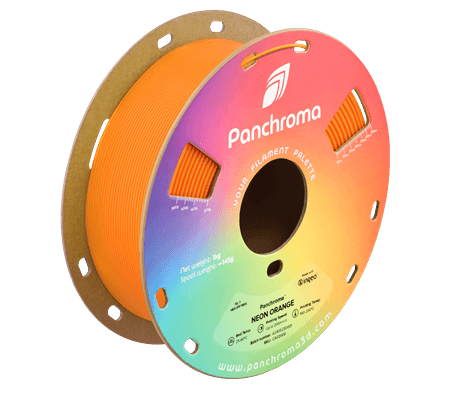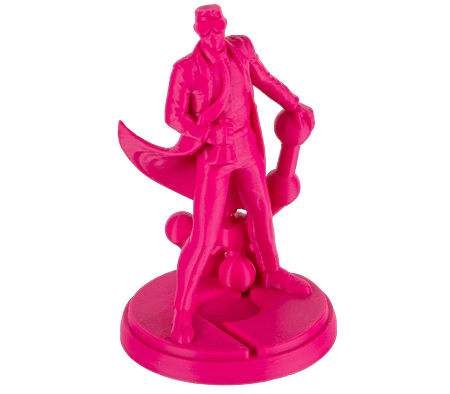Polymaker
Polymaker Panchroma Neon PLA 1kg 1.75mm Filament
Polymaker Panchroma Neon PLA 1kg 1.75mm Filament
Low stock: 2 left
Couldn't load pickup availability
High quality florescent series of Polymaker™ Neon PLA colours that react under blacklight.
- High quality Polymaker PLA.
- Bright florescent neon colour that reacts under black light.
- Easy-to-print.
- Great rigidity, tensile strength and inter-layer adhesion.
- Consistent colour and tolerance (1.75mm diameter +/- 0.03mm)
Panchroma™ Neon PLA (from Polymaker) is a new range of vibrant and saturated Neon PLA colours. This unique fluorescent colour range offer an intense saturated colour in daylight and react under UV blacklight for a bright neon colour, delivering the perfect choice for cosplay costumers, party decorations and more.
Features
-
Intense Neon Colour - Panchroma™ Neon PLA is a new colour range manufactured with a range of fluorescent colour pigments to deliver an easy-to-use PLA with vibrancy and saturation that make your 3D printing projects stand out.
-
Blacklight Reactive - Aside from offering beautiful neon colours in daylight conditions, this range also uses pigments that react under black light, delivering the perfect choice for cosplay costumers, party decorations and more
-
High Quality Raw Materials - Panchroma™ Neon PLA filament is made with the highest quality ingredients including Ingeo® from Natureworks. Natureworks is a world-leading biopolymers supplier based in the USA with a portfolio of high quality raw PLA materials produced from rapidly renewable plant resources. Combining Polymakers innovative R&D technologies, compounding and extrusion systems with Natureworks Ingeo® resins produces a reliable 3D printing filament to print beautiful and accurate models
-
Compatibility In Mind - Panchroma™ Neon PLA is compatible with a wide range of 3D printers and works well on most printing surface with a thin layer of glue stick applied, no heated bed is required but can sometimes be used at 40 - 60°C for better results (maximum 60°C).
-
Cardboard spool with coated edge - Panchroma filament comes in upgraded packaging, featuring an enhanced coating on the edge and a fully recycled cardboard spool and box. The hard edge not only prevents the dust from fraying cardboard but also protects the edge from deformation and delamination, ideal for some multi-material systems.
Printing Settings
| Nozzle Temperature | 190°C - 230°C |
|---|---|
| Build Plate Temperature | 25°C - 60°C |
| Build Surface Material | Works well with most build surfaces i.e Glass, Blue Tape, BuildTak® etc |
| Build Surface Treatment | Can apply Magigoo Original or PVA glue to the build surface to improve adhesion. |
| Cooling Fan | ON |
| Printing Speed | Up to 200mm/s |
| Recommended Support Material |
Single Extrusion: |
The above are printing recommendations based on 0.4 mm nozzle. Please note ideal printing conditions may vary depending on your 3D printer setup. For high speed 3D printers, make sure to increase your extrusion temperature in order to use higher printing speeds.
For other tips printing Panchroma™ Neon PLA contact us!
Specification
| Net Weight | 1kg |
|---|---|
| Material Type | PLA (with Saturated / Blacklight reactive colour pigments) |
| Density | 1.19 (g/cm3) |
Compatibility
Panchroma™ Neon PLA has been engineered with compatibility in mind to print excellently on a wide range of 3D printers.
High rigidity materials like Panchroma™ Neon PLA work best in set ups where the filament guide system is smooth and as no harsh bends.
Of course with thousands of unique 3d printer models on the market, we can't guarantee each filament type will work with every 3D printer. Slicer experience and setting adjustment is always required to get the most out of a material. Before jumping into an ambitious project we always recommend printing some known calibration tests to build or make adjustments to the filament profile.
Technical Data
All testing specimens were printed under the following conditions: Nozzle Temperature = 205˚C, build plate temperature = 45˚C, infil = 100%, cooling fan = ON
All specimens were conditioned at room temperature for 24h prior to testing.
THERMAL PROPERTIES
| Value | Testing Method | |
| Vicat Softening Temperature | 63°C | ISO 306, GB/T 1633 |
MECHANICAL PROPERTIES
| Value | Testing Method | |
| Youngs Modulus (X-Y) |
3,427 MPa | ISO 527, GB/T 1040 |
| Tensile Strength (X-Y) |
52.3 MPa | ISO 527, GB/T 1040 |
| Tensile Strength (Z) |
40.5 MPa | ISO 527, GB/T 1040 |
| Notched Charpy Impact Strength (X-Y) |
3.3 kJ/m2 | ISO 179, GB/T 1043 |
We have full MDS for Panchroma™ Neon PLA and all other Polymaker products. Contact us to enquire!
The typical values presented in Polymakers data sheet are intended for reference and comparison purposes only. Due to the nature of 3D printing they should not be used for design specifications or quality control purposes.
STORAGE & DRYING
All plastics are hygroscopic meaning they absorb moisture from the air which can affect printing quality and strength of printed parts. How quickly this absorption occurs depends on the material and your environment. Polymakers Panchroma™ Neon PLA filaments are dried and packaged in a vacuum sealed bag with desiccant to ensure the best printing quality. When not in use Panchroma™ Neon PLA should be stored away from sunlight and sealed in the packaged resealable bag.
Although filaments can be dried, drying will speed up the aging process of the plastic making it more brittle over time. Preventing the filament from absorbing moisture in the first place is the best solution to keep your filament working to its maximum potential. For long term storage we highly recommend storing in a sealed container with dry desiccant that reduces the relative humidity to 10-20% RH.
In-house we manage our filaments with Polymakers PolyDryer™ which keep offers best-in-class sealing to protect filaments from absorbing moisture
If you hear popping sounds and notice that the surface quality of your print is uneven or the colour is not consistent, this is a likely indicator that the filament has absorbed too much moisture. Spools of Panchroma™ Neon PLA can be dried with Polymaker PolyDryer™ using power level 1. Alternatively if you have a convection oven that is accurate at low temperatures, users can dry filament in a preheated convection oven at 55˚C for up to 6 hours. Results may vary depending on the accuracy of your oven so please be conservative. For more information about filament drying please read our user guide.
FAQ
Q: What support materials can I use with this product?
A: If your 3D printer supports multi-material 3D printing, Panchroma™ Neon PLA is compatible with Polymaker’s PolySupport™ and PolyDissolve™ S1 filament. PolySupport™ is a breakaway support material which can be easily peeled away and PolyDissolve™ S1 is a water dissolvable support material, ideal for complex geometries.
Q: Should I rewind this filament if I want to use it with a different spool?
A: We strongly advise against tampering with the product by rewinding. See our article for full details about the risks. All Polymaker filaments are wound with tension but without strain. Rewinding completely rearranges the curvature of the winding and this strain over time can cause most plastics to catastrophically break. If for some reason your printer is locked into fitting less than standard sized spools, there may be safe printable adaptors or external mounting solutions available.
Don't know where to start? Or which filament will suit your application? We have a broad range of support options including telephone support. Contact us today!
| Filament | |
| Diameter | 1.75mm |
| Spool Weight | 1kg |
Materials
Materials
PLA - This solid filament is used to make models that are a refined representation with rigid properties.
TPU - This flexible filament holds the shape of the model and can with stand being twisted and squashed to survive the field environment.
Shipping
Shipping
Free standard shipping and Express for free orders over $300 calculated at the checkout.
All items are shipped from Townsville, QLD.
Shipping World Wide - coming soon.
Care Instructions
Care Instructions
PLA
Temperature:
Keep it cool! PLA starts to soften at around 60°C (140°F), so avoid placing it near heat sources or leaving it in hot cars.
Sunlight:
Prolonged direct sunlight can cause fading and potential deformation. Try to keep it out of long sun exposures.
Cleaning:
Gently wash with warm water and a bit of mild soap using a soft cloth. No harsh scrubbing, please!
Handling:
Handle with care—avoid excessive bending or dropping it, as PLA is rigid and can crack or break.
Storage:
Store in a cool, dry place to maintain its shape and longevity.
TPU
Temperature:
TPU is built to be flexible, but still avoid extreme or prolonged heat. It’s more resilient than PLA, but unnecessary heat can still degrade it over time.
Sunlight:
Try not to leave TPU items in direct sunlight for too long, as UV rays can fade the colors and slowly affect the material quality.
Cleaning:
Just like PLA, a quick clean with warm water and mild soap works great. Use a soft cloth and don’t be too rough.
Handling:
Enjoy its flexibility! However, even though TPU can bend, continuous stretching or heavy impacts might wear it out faster.
Storage:
Keep it in a cool, dry spot away from harsh elements to maintain its flexibility and appearance.
Share
